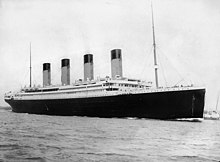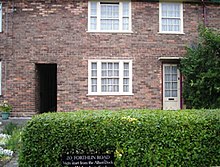King John's letters patent of 1207 announced the foundation of the borough of Liverpool, but by the middle of the 16th century the population was still only around 500. The original street plan of Liverpool is said to have been designed by King John near the same time it was granted a royal charter, making it a borough. The original seven streets were laid out in a H shape:
- Bank Street (now Water Street)
- Castle Street
- Chapel Street
- Dale Street
- Juggler Street (now High Street)
- Moor Street (now Tithebarn Street)
- Whiteacre Street (now Old Hall Street)
In the 17th century there was slow progress in trade and population growth. Battles for the town were waged during the English Civil War, including an eighteen-day siege in 1644. In 1699 Liverpool was made a parish by Act of Parliament, that same year its first slave ship, Liverpool Merchant, set sail for Africa. As trade from the West Indies surpassed that of Ireland and Europe, and as the River Dee silted up, Liverpool began to grow. The first commercial wet dock[7][8] Substantial profits from the slave trade helped the town to prosper and rapidly grow. By the close of the century Liverpool controlled over 41% of Europe's and 80% of Britain's slave commerce. was built in Liverpool in 1715.
By the start of the 19th century, 40% of the world's trade was passing through Liverpool and the construction of major buildings reflected this wealth. In 1830, Liverpool and ManchesterLiverpool and Manchester Railway. The population continued to rise rapidly, especially during the 1840s when IrishGreat Famine. By 1851, approximately 25% of the city's population was Irish-born. During the first part of the 20th century, Liverpool was drawing immigrants from across Europe. became the first cities to have an intercity rail link, through the migrants began arriving by the hundreds of thousands as a result of the


The Housing Act 1919 resulted in mass council housing building across Liverpool during the 1920s and 1930s. Thousands of families were rehoused from the inner-city to new suburban housing estates, based on the pretext that this would improve their standard of living, though this is largely subjective. A large number of private homes were also built during this era. The process continued after the Second World War, with many more new housing estates being built in suburban areas, while some of the older inner city areas where also redeveloped for new homes.
During the Second World War there were 80 air-raids on Merseyside, killing 2,500 people and causing damage to almost half the homes in the metropolitan area. Significant rebuilding followed the war, including massive housing estates and the Seaforth Dock, the largest dock project in Britain. Much of the immediate reconstruction of the city centre has been deeply unpopular, and was as flawed as much town planning renewal in the 1950s and 1960s - the portions of the city's heritage that survived German bombing could not withstand the efforts of urban renewal. Since 1952 Liverpool has been twinned with Cologne, Germany, a city which also experienced aerial bombing during the war.
In the 1960s Liverpool was the centre of the "Merseybeat" sound which became synonymous with The Beatles and fellow Liverpudlian rock bands.
From the mid-1970s onwards Liverpool's docks and traditional manufacturing industries went into sharp decline. The advent of containerisation meant that the city's docks became largely obsolete. In the early 1980s unemployment rates in Liverpool were among the highest in the UK. In recent years, Liverpool's economy has recovered and has experienced growth rates higher than the national average since the mid-nineties.

Previously part of Lancashire, and a county borough from 1889, Liverpool became in 1974 a metropolitan borough within the newly created metropolitan county of Merseyside.
At the end of the 20th century Liverpool was concentrating on regeneration, a process which still continues today. To celebrate the Golden Jubilee of Queen Elizabeth II in 2002, the conservation charity Plantlife organised a competition to choose county flowers; the sea-holly was Liverpool's final choice.
Capitalising on the popularity of 1960s rock groups, such as The Beatles, as well as the city's world-class art galleries, museums and landmarks, tourism has also become a significant factor in Liverpool's economy.
In 2004, property developer Grosvenor started the Paradise Project, a £920 m development centered on Paradise Street, which involved the most significant changes to Liverpool's city centre since the post-war reconstruction. Renamed 'Liverpool 1', the centre opened in May 2008.
In 2007 the city celebrated the 800th anniversary of the foundation of the borough of Liverpool, for which a number of events were planned. Liverpool is a joint European Capital of Culture for 2008. The main celebrations, in September 2008, included La Princesse, a large mechanical spider which is 20 metres high and weighs 37 tonnes, and represents the "eight legs" of Liverpool: honour, history, music, the Mersey, the ports, governance, sunshine and culture. La Princesse roamed the streets of the city during the festivities, and concluded by entering the Queensway Tunnel.
Second city of Empire

Liverpool was described as such by Benjamin Disraeli, the Prime Minister associated with the height of Britain's Imperial ambition. For periods during the 19th century the wealth of Liverpool exceeded that of London itself,[9] and Liverpool's Custom House was the single largest contributor to the British Exchequer.[10] Liverpool's status can be judged from the fact that it was the only British city ever to have its own Whitehall office.[11]
The first United States consul anywhere in the world, James Maury, was appointed to Liverpool in 1790, and remained in office for 39 years.
As early as 1851 the city was described as "the New York of Europe"[12] and its buildings, constructed on a heroic, even megalomaniacal scale stand witness to the supreme confidence and ambition of the city at the turn of the 20th century. Liverpool was also the site of the UK's first provincial airport, operating from 1930.
Elgar's Pomp and Circumstance March No.1, often seen as Britain's Imperial anthem, was dedicated by the composer to the Liverpool Orchestral Society and had its premiere in the city in October 1901.
During the Second World War, the critical strategic importance of Liverpool was recognised by both Hitler and Churchill, with the city suffering a blitz second only to London's, and the pivotal Battle of the Atlantic being planned, fought and won from Liverpool.[13]
Inventions and innovations

Ferries, railways, transatlantic steamships, municipal trams,[14] electric trains[15] and the helicopter[16] were all pioneered in Liverpool as modes of mass transit.
The first School for the Blind,[17] High School for Girls,[18][19] council house[20] and Juvenile Court[21] were all founded in Liverpool. The RSPCA,[22] NSPCC,[23] Age Concern,[24] Relate, Citizen's Advice Bureau[25] and Legal Aid all evolved from work in the city.
In the field of public health, the first lifeboat station, public baths and wash-houses,[26] sanitary act,[27] medical officer for health, district nurse, slum clearance,[28] purpose-built ambulance,[29] X-ray medical diagnosis,[30] school of tropical medicine, motorised municipal fire-engine,[31] free school milk and school meals,[32] cancer research centre,[33] and zoonosis research centre[34] all originated in Liverpool. The first British Nobel Prize was awarded in 1902 to Ronald Ross, professor at the School of Tropical Medicine, the first school of its kind in the world.[35] Orthopaedic surgery was pioneered in Liverpool by Hugh Owen Thomas,[36] and modern medical anaesthetics by Thomas Cecil Gray.

In finance, Liverpool founded the UK's first Underwriters' Association[37] and the first Institute of Accountants. The Western world's first financial derivatives (cotton futures) were traded on the Liverpool Cotton Exchange in the late 1700s.[38]
In the arts, Liverpool was home to the first lending library, athenaeum society, arts centre[39]public art conservation centre.[40] Liverpool is also home to the UK's oldest surviving classical orchestra, the Royal Liverpool Philharmonic Orchestra.[41] and
In 1864, Peter Ellis built the world's first iron-framed, curtain-walled office building, Oriel Chambers, the prototype of the skyscraper.
In 1897, the Lumière brothers filmed Liverpool,[42] including what is believed to be the world's first tracking shot,[43] taken from the Liverpool Overhead Railway - the world's first elevated electrified railway.
Liverpool inventor Frank Hornby was a visionary in toy development and manufacture and produced three of the most popular lines of toys in the twentieth century: Meccano, Hornby Model Railways and Dinky Toys.
In 1999, Liverpool was the first city outside the capital to be awarded blue plaques by English Heritage in recognition of the "significant contribution made by its sons and daughters in all walks of life."[44





Comments
0 comments to "Liverpool - History"
Đăng nhận xét